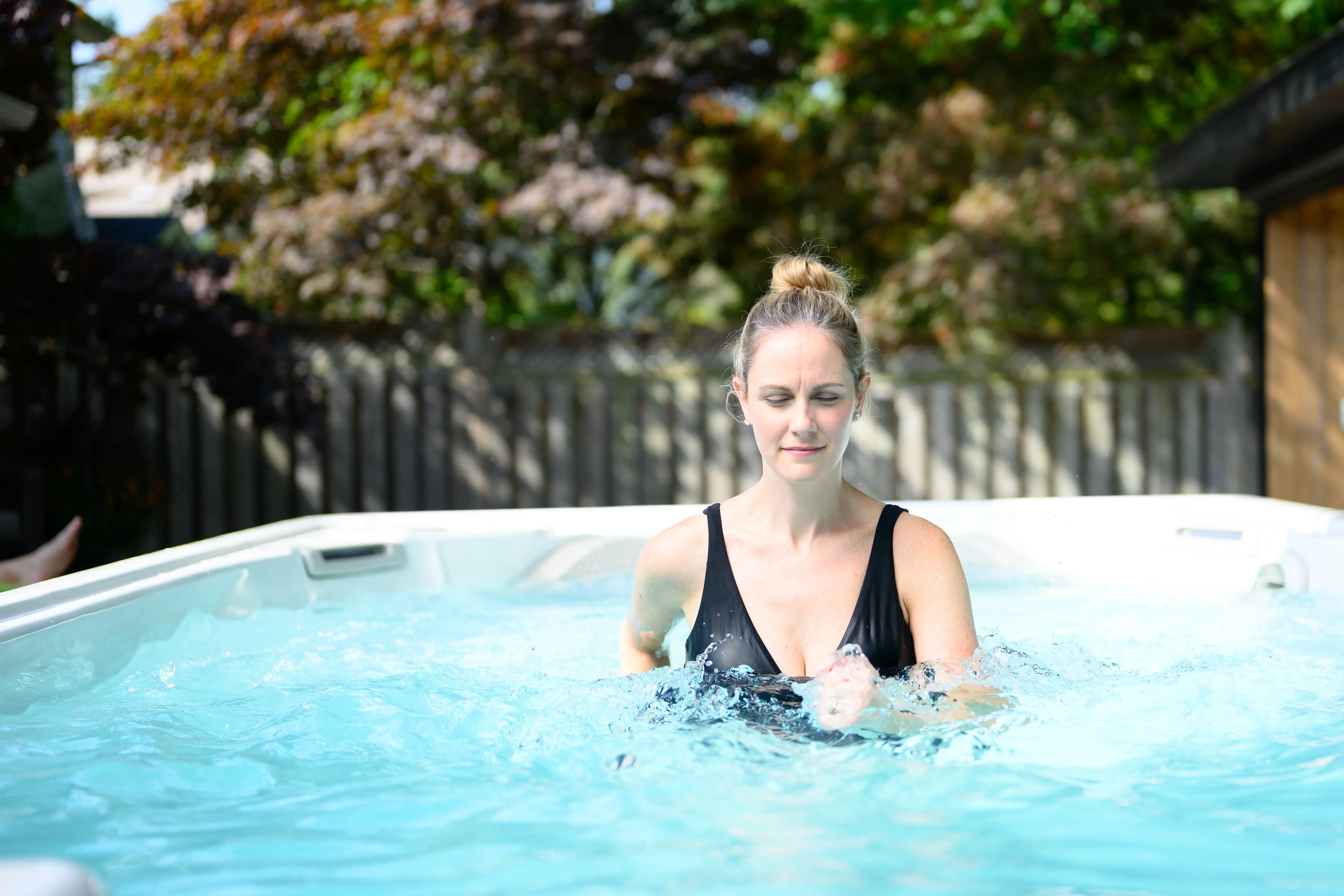
Swimming vs. Running for Cardio: Which is the Better Choice?
Cardiovascular exercise is essential for a healthy lifestyle, boosting heart health, metabolism, and overall well-being. Among the popular choices for cardio workouts, swimming and running stand out. Both exercises offer remarkable benefits, but which one is superior?
In this blog from Hydropool, we'll explore how swimming and running compare in terms of calories burned, impact on the body, fat-burning potential, and overall advantages. We’ll particularly highlight the unique benefits of swim spas.
How Many Calories Do You Burn Swimming vs Running?
Caloric expenditure is crucial in evaluating the effectiveness of any cardio workout. Both swimming and running can help you burn calories, but the amount depends on factors like intensity, duration, and body weight.
- Running: Running can burn approximately 600-1000 calories per hour, depending on speed and intensity. For instance, a 70-kilogram person burns about 372 calories running at 6 mph for 30 minutes.
- Swimming: Swimming, especially vigorous strokes like butterfly or freestyle, can burn around 500-700 calories per hour. A 70-kilogram individual burns roughly 372 calories swimming intense laps for 30 minutes.
While running may burn more calories per hour at higher intensities, swimming provides a comparable caloric burn, with additional benefits that make it an appealing option.
Impact on the Body: High Impact vs. Low Impact
The impact on the body is a major difference between running and swimming.
- Running: As a high-impact exercise, running puts significant stress on the joints, particularly the knees, ankles, and hips. This can lead to injuries like shin splints, stress fractures, and joint pain, especially without proper running techniques and equipment.
- Swimming: In contrast, swimming is a low-impact activity. The buoyancy of water supports your body, reducing joint strain and lowering the risk of injury. This makes swimming an excellent choice for those with arthritis, joint pain, or those recovering from injury.
Running is a great method of cardio exercise, but it can typically lead to more injuries than swimming exercises due to its high-impact nature. Issues such as shin splints or twisted ankles can be quite common amongst runners, especially as we get older.
Fat Burning Benefits
Both running and swimming effectively burn fat, but in slightly different ways.
- Running: Running primarily uses the aerobic system, which is effective for fat burning. Long-distance running helps reduce body fat but may lead to muscle loss if not combined with strength training.
- Swimming: Swimming engages multiple muscle groups simultaneously, promoting muscle tone while burning fat. The water's resistance adds an extra challenge, helping build and maintain lean muscle mass. This combination of cardio and resistance training makes swimming a highly effective fat-burning exercise.
Whilst running can lead to bigger weight loss in the same time period, swimming exercises a larger number of areas on your body, meaning that swimming can provide a better all-round exercise that will benefit your cardiovascular system and and your muscles.
Advantages of Swimming
Swimming, especially in a swim spa, offers several distinct advantages:
- Full-Body Workout: Swimming exercises nearly every muscle group, including the core, arms, legs, and back, providing a comprehensive workout.
- Low Impact: The water's buoyancy minimises joint strain, making swimming suitable for all fitness levels and ages.
- Variety: Swimming allows for a range of strokes and activities, from freestyle and backstroke to water aerobics and resistance exercises, keeping workouts diverse and engaging.
- Therapeutic Benefits: The therapeutic properties of water aid in relaxation, stress reduction, and overall mental well-being.
- Accessibility: Swim spas offer a controlled environment for swimming year-round, regardless of weather. They also feature adjustable current settings, allowing users to tailor their workout intensity.
Swim spas are specifically designed to offer resistance which can be reduced or increased depending on your preferences, meaning you can get the exercise benefits of an olympic swimming pool without needing the same space in your home.
Advantages of Running
Running also has its unique benefits:
- Convenience: Running requires minimal equipment and can be performed almost anywhere, from treadmills to outdoor trails and city streets.
- Bone Density: The impact of running helps increase bone density, which is crucial for preventing osteoporosis.
- Mental Health: Running can significantly improve mood and reduce stress through endorphin release.
Swimming Takes the Lead
Both swimming and running are excellent cardiovascular exercises with their own sets of benefits. However, when considering impact on the body, overall muscle engagement, and therapeutic effects, swimming, particularly in a self-cleaning swim spa, stands out as the superior choice. Swim spas offer a versatile, low-impact, and enjoyable workout environment that is accessible year-round and adaptable to all fitness levels.
Investing in a swim spa can enhance your cardio routine, providing a comprehensive and effective way to stay fit and healthy. Whether you're aiming to burn calories, build muscle, or simply enjoy the soothing benefits of water, swimming offers a solution that often surpasses running in many aspects.
Dive into the world of swim spas and experience the full range of benefits swimming has to offer. Your body and mind will thank you.







